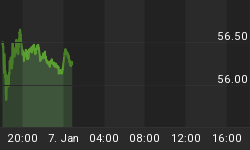April 30, 2009
The swine flu could not have come at a worse time. Just when there were signs of a nascent recovery, confidence takes another hit. As a result, "reflation trades" may be put on ice if investors revert to "panic mode" again. While it is difficult to assess the full economic impact of the swine flu, we believe some of the dynamics are foreshadowed. This flu may reinforce long-term trends and provide an opportunity for investors to position themselves accordingly.
Trade and travel has already been impacted. However, some regions in the world may be better prepared than others. Asia in particular, due to its experience with the bird flu (avian flu or SARS virus) in 2003, has processes in place that allow them to slow the spread of any potential pandemic far better now. Amongst others, airports in many Asian cities scan body temperatures to identify passengers with fever. Such measures will not prevent a virus from spreading, but reduces panic and the feeling of helplessness - key factors in contributing to overall individual and business risk appetite. Similarly, the U.S. and Europe have substantially improved their alert systems and coordination. In California, as a neighbor to Mexico, the continuous threat of earthquakes provides for a culture of coordination and cooperation at various levels of government and emergency services. Conversely, however, Mexico may not be as well prepared to deal with the swine flu.
Some experts say that no matter how severe the flu will be, it is quite likely going to follow seasonal flu patterns. If this forecast comes to pass, it may be to the detriment of the Southern Hemisphere as the flu season is coming to an end in the North. Tourism and trade is likely to be affected all over the world, but the perception of the level of preparedness and actions in different regions may affect which regions will fare better or worse as the extent of the virus evolves.
Don't miss an Insight:
Sign up for our Newsletter
The Archive:
Read past Merk Insights
To get the world out of the financial crisis, governments around the world want to get credit flowing again. The outbreak of the swine flu is yet another headwind policymakers have to deal with. Even if the evolution of this flu is unclear, it is a fair assumption that policymakers will attempt to alleviate its impact nonetheless. In the eyes of the Federal Reserve (Fed), it may be yet another catalyst to keep the floodgates of money supply open. We would caution with so much latent inflationary pressure in the system already, such action may only serve to compound future economic ramifications. Hence our title: the Fed may be creating significant unintended consequences via its market interventions.
Similarly, (and while we cannot know this for certain) odds are that we will get through the swine flu relatively unscathed. This is not to belittle the risk - indeed, it may be only a matter of time until the world faces a truly devastating pandemic. From our initial assessment, the swine flu will be a wake up call to further improve preparedness everywhere in the world, but may not transpire to be as detrimental as some may think. It is our view that we have more to fear from the long-term inflationary impact of the Fed's printing of money to pay for government spending than the flu.
In a recent commentary published in the Financial Times (click here), we argued that "rather than curing the patient, present initiatives may be over-prescribing the patient with medication that causes significant side effects." The U.S. economy has been sick for some time and our reference referred to monetary and fiscal policy, not the reaction to the swine flu. We are now not only concerned that the seeds of inflation will bear fruit, but that this latest scare may provide the Fed and government with additional impetus to further drive up the level of inflationary pressure in the system. Cynically (and we in no way want to trivialize the risk), at least policy makers now have a scapegoat in the flu if policies to jumpstart the economy do not pan out.
In our assessment, the dollar rally may be short-lived as the world starts to cope with the realities of the swine flu. Investors may want to consider whether gold, hard or Asian currency components may provide valuable diversification to their portfolios. In recent analyses, we discussed whether there are any hard currencies left; potential depression currency plays; as well as who may benefit as the world tries to reflate. To be informed as we continue these discussions, subscribe to our newsletter at www.merkfund.com/newsletter.

Separately, we will host numerous events at the Las Vegas Money Show (May 12 - 14). Please come and visit us - we would love to see you there (click here for more information and to register); not only will we discuss the economy and the dollar, we will also provide a first preview of "SustainableWealth", a book written by Chief Investment Officer Axel Merk. SustainableWealth, due in bookstores this fall, is about understanding how the greater economic universe works, how that may affect your finances, and how to manage those finances to seek financial stability. Click here to be notified when the book becomes available.
We manage the Merk Hard and Asian Currency Funds, no-load mutual funds seeking to protect against a decline in the dollar by investing in baskets of hard and Asian currencies, respectively. To learn more about the Funds, or to subscribe to our free newsletter, please visit www.merkfund.com.















